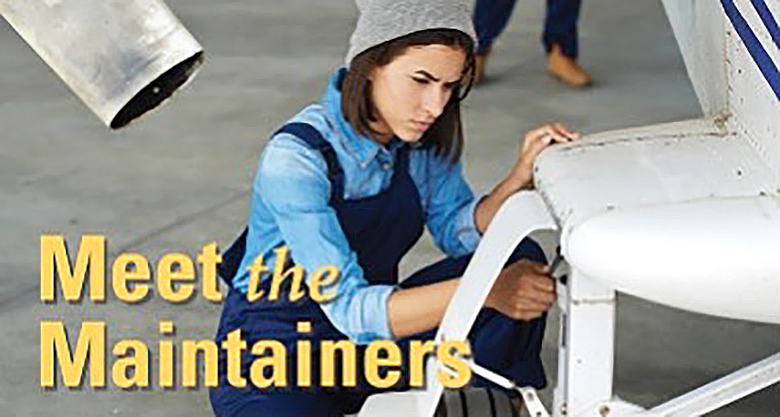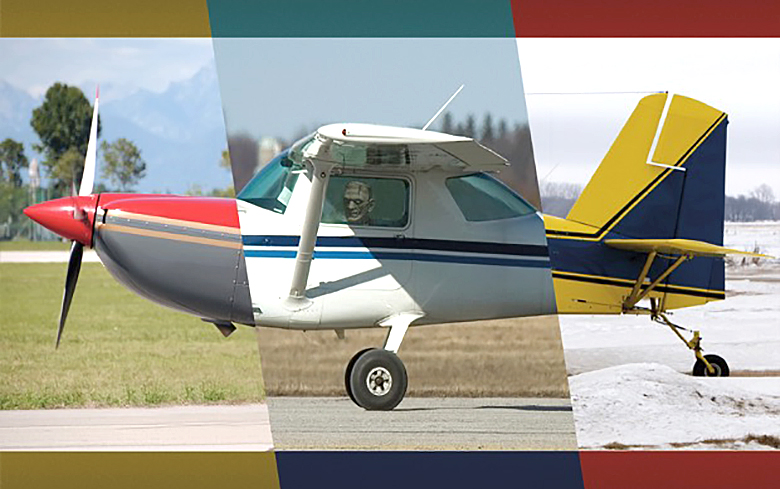Frankenstein’s Airplane
The Sometimes Tricky Business of Modifying Aircraft
By James Williams
FAA Safety Briefing Magazine

The “Frankenplane” is a concept FAA Safety Briefing first explored in the 2014 article “Beware the Frankenplane!” (See our May/Jun 2014 edition at in our archive.) It alludes to Mary Shelley’s 1818 novel Frankenstein or The Modern Prometheus. Shelley’s work tells the story of Dr. Victor Frankenstein, who creates a monster through a secret process of imparting life to non-living matter. The creature’s large size arose from Frankenstein’s difficulty replicating the body’s tiny structures. Later Hollywood versions changed this slightly to cadaver parts and electricity. The original novel and subsequent movie versions diverge significantly from this initial setup. But if you are considering modifying an airplane and looking to buy or even fly a modified plane, there may be some lessons here.
The idea of modifying aircraft can be powerful. But while we aren’t Dr. Frankenstein in his lab, we may create a monster if we aren’t careful. Certified aircraft can be modified via Supplemental Type Certificates (STCs). (We recognize there are other means to modify aircraft, but we’ll focus specifically on STCs for this article.) STCs are additions to the aircraft’s original Type Certificate (TC) that allow for changes to the original design. STCs impact pilots, aircraft owners, and aviation maintenance technicians (AMTs), as each plays a role from selection to installation to operation. These impacts are usually pretty manageable for a pilot, i.e., an updated weight and balance or new operating manuals or procedures. In the case of single STCs, you can usually work with them pretty easily. But when you start layering STCs, the Frankenplane comes into play. Let’s examine two examples that proved fatal to their pilots.

“Beware; For I Am Fearless and Therefore Powerful”
Our first example is a classic Frankenplane that shows where the power of fearlessness may lead. In 2010, a Cessna T337G suffered an inflight breakup caused when the pilot exceeded maneuvering speed while pulling up from a high-speed low pass at Monmouth County Executive airport. Contributing to the accident was the fact that the aircraft had 22 different STCs applied to it, some of which appeared to have weakened its structure.
While this is an extreme example, it illustrates the danger: an STC is usually evaluated in isolation, meaning one STC on an original aircraft. It can be perfectly reasonable to have more than one STC on an airplane, but it is crucial to consider the impact of layering STCs and how they might interact. Much as a pilot must consider how various medications might interact, the owner and installer must consider whether multiple STCs interact.
For example, an upgraded seatbelt kit is unlikely to interfere with extended wingtip fuel tanks, but those same extended fuel tanks may not work as well with a short take-off and landing (STOL) kit. In this case, the National Transportation Safety Board (NTSB) discovered skin fatigue cracks that indicated the airplane was subjected to vibratory stress. While these cracks didn’t contribute to the accident, it shows that not all was well with the aircraft.

“Man, How Ignorant Art Thou In Thy Pride of Wisdom!”
Our next example is more subtle, but it still illustrates the danger from physical damage after multiple STCs and ignorance of how they interact. In 2010, a Beechcraft Baron suffered a loss of control in flight and crashed, killing both on board. The pilot was undergoing a multiengine instrument proficiency check at the suggestion of his insurance company after repurchasing the airplane 22 years after selling it to another owner.
Two STCs were completed after the accident aircraft was sold. The first was the installation of vortex generators that lowered the aircraft’s minimum single-engine controllable airspeed (Vₘ𝒸ₐ) from 81 knots indicated airspeed (IAS) to 74 knots IAS. The airspeed indicator was corrected to reflect this change. An STC almost ten years later covered upgraded engines, propellers, nose cowlings, and winglets. Part of the STC process was to change the VMCA from the original TC value of 81 knots IAS to 87 or 88 knots IAS. However, the airspeed indicator was not updated; it still showed the Vₘ𝒸ₐ of 74 knots IAS from the first STC.
The second STC also contained the following passage in its Limitations and Conditions section: “This approval should not be extended to other aircraft of this model on which other previously approved modifications are incorporated unless it is determined by the installer that the interrelationship between this change and any other previously approved modifications will not produce an adverse effect upon the airworthiness of that airplane ….” The events of the checkout flight prove the wisdom of heeding those conditions.
According to radar tracks, the flight continued into what appeared to be low-speed airwork, with the last reported ground speed measuring 71 knots. Witnesses reported seeing the airplane flying level before it descended in a left spin and impacted a house. Extensive fire damage to the wreckage prevented a more thorough investigation, but it appeared that there was no pre-impact failure or malfunction of the observed components. Based on the purpose of the flight and radar tracks, the NTSB determined that the pilot likely was performing either imminent stall or simulated loss of engine power airwork before the aircraft stalled and entered a spin.
Because the two STCs had never been flight-tested in combination, there was no performance data to determine the aircraft’s Vₘ𝒸ₐ. The NTSB, however, determined Vₘ𝒸ₐ was likely higher than the 74 knots IAS on the airspeed indicator. After the second STC was installed, the previous owner had safely operated the plane for more than a decade. A little more knowledge on the part of the original owner could have prevented this tragedy.

Caveat Emptor!
The STC process is an excellent tool for modernizing and increasing the capabilities of older aircraft. But caution is well warranted whether you’re approaching these aircraft from the perspective of a pilot or an owner. If you see an airplane that has STCs, especially one with multiple STCs, it’s time to investigate and ask questions. While the installer of each STC is responsible to determine whether the design change is compatible with any previously approved modifications, this may not always happen. When in doubt, have a qualified maintenance professional review not only the physical aircraft but also the maintenance records which should contain any modifications or alterations to the aircraft. The more extensive the modification(s), the more time is likely warranted. If you are looking to purchase an aircraft, contact someone knowledgeable of the type who can help you sort through which modifications could be a boon and which are Frankenplanes in waiting.
Remember that the monster of Mary Shelley’s novel was intelligent, articulate, and could even be considered kind until the villagers mistreated him. Even potential Frankenplanes can be good aircraft when treated with the proper respect.
James Williams is FAA Safety Briefing’s associate editor and photo editor. He is also a pilot and ground instructor.
Reprinted with permission from FAA Safety Briefing. Visit the Flight Safety Briefing website: https://www.faa.gov/news/safety_briefing/



